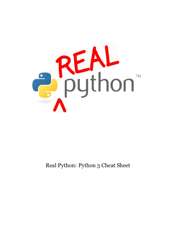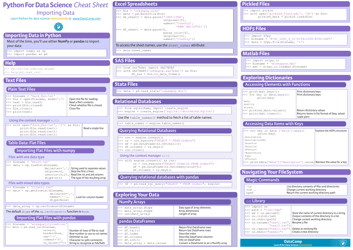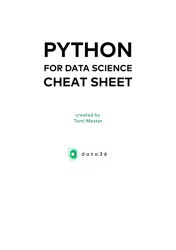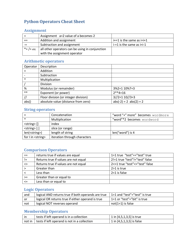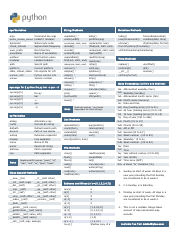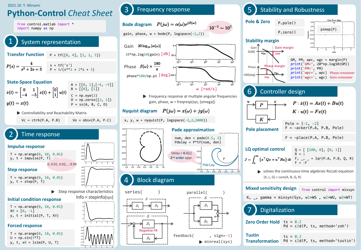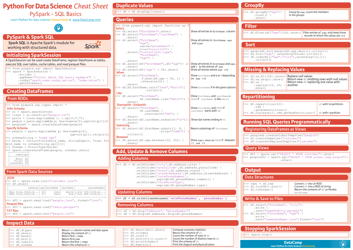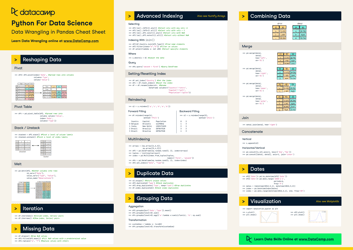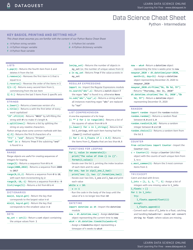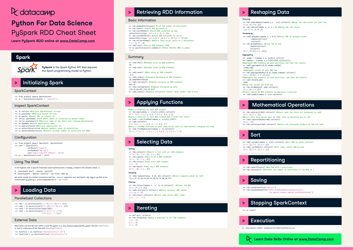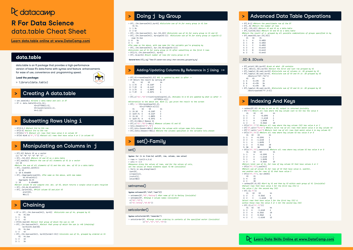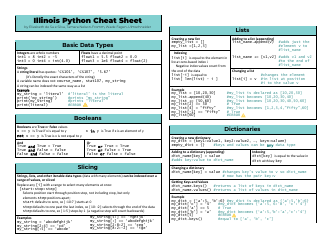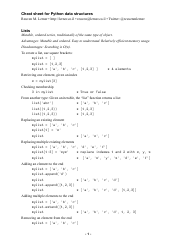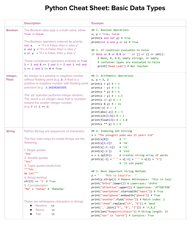Python Basics Cheat Sheet - Python for Data Science
The Python Basics Cheat Sheet for Data Science is a reference guide that provides a quick overview of fundamental concepts, syntax, and operations in the Python programming language. It is specifically tailored towards individuals working with Python for data science purposes.
FAQ
Q: What is Python?
A: Python is a programming language that is widely used in the field of data science.
Q: What are the basic concepts of Python?
A: Some basic concepts of Python include variables, data types, loops, functions, and conditionals.
Q: What is a variable in Python?
A: A variable is a named container that stores data in Python.
Q: What are data types in Python?
A: Python supports various data types including integers, floats, strings, booleans, lists, tuples, and dictionaries.
Q: What are loops in Python?
A: Loops are used to repeat a block of code until a certain condition is met. Python supports for loops and while loops.
Q: What are functions in Python?
A: Functions are reusable blocks of code that perform a specific task. They help in organizing and reusing code.
Q: What are conditionals in Python?
A: Conditionals allow the program to make decisions based on certain conditions. Python supports if-else statements and if-elif-else statements.
Q: What is the purpose of Python for data science?
A: Python is widely used in data science for tasks such as data manipulation, analysis, visualization, and machine learning.
Q: What are some commonly used Python libraries for data science?
A: Some commonly used Python libraries for data science include NumPy, Pandas, Matplotlib, and Scikit-learn.
Q: How can Python be used for data visualization?
A: Python provides libraries such as Matplotlib and Seaborn that can be used to create various types of plots and charts.
Q: Is Python easy to learn for data science?
A: Yes, Python is known for its simple and easy-to-understand syntax, which makes it beginner-friendly for data science.



